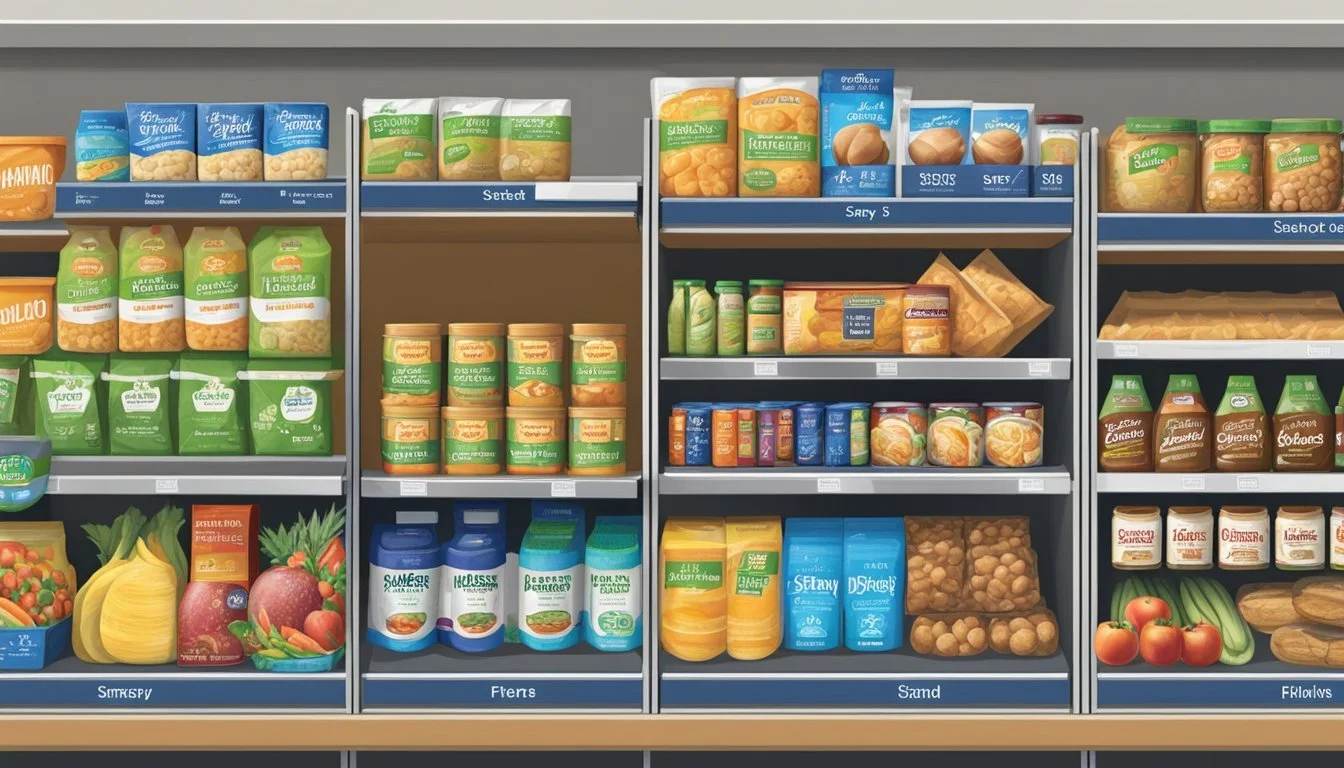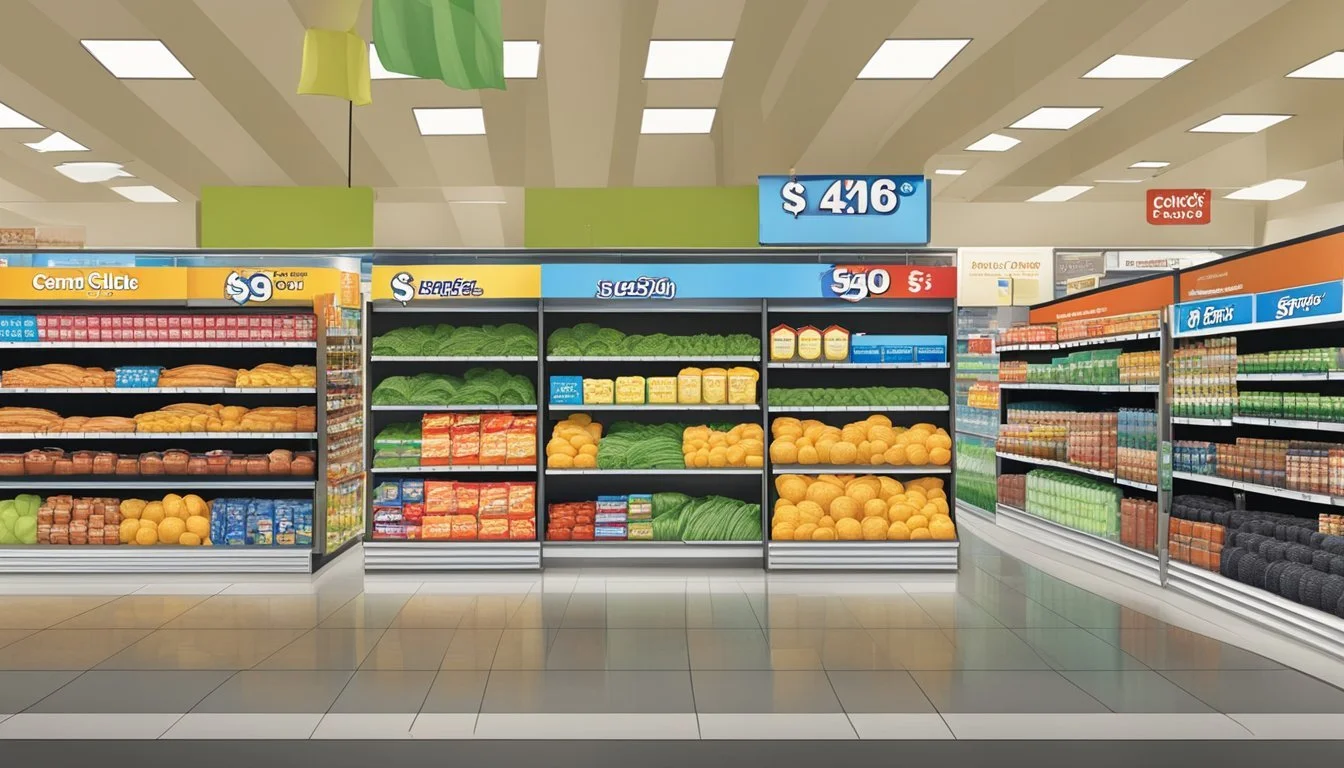Is Hannaford Cheaper Than Sam's Club?
A price comparison of two popular grocery chains
When it comes to grocery shopping, finding the best deals can make a significant difference in your budget. Many shoppers wonder if wholesale clubs like Sam's Club offer better prices than traditional supermarkets like Hannaford.
While Sam's Club often provides lower prices on bulk items, Hannaford can be more cost-effective for smaller quantities and perishable goods. The price difference between these two stores varies depending on the specific products and quantities purchased.
Sam's Club's membership model allows them to offer discounted prices on large quantities, making it ideal for families or those who can store bulk items. Hannaford, on the other hand, excels in providing fresh produce, meats, and dairy at competitive prices without requiring a membership fee. Shoppers should consider their individual needs and shopping habits when deciding which store offers the best value for their specific situation.
Comparing Retail Models
Hannaford and Sam's Club represent two distinct approaches to retail grocery shopping. Their business models, product offerings, and pricing strategies cater to different consumer needs and preferences.
Hannaford Overview
Hannaford operates as a traditional supermarket chain. It maintains over 180 stores across five Northeastern states. The company focuses on providing a wide variety of fresh produce, meats, and everyday grocery items.
Hannaford stores are open to the general public without requiring a membership. They offer weekly sales and a loyalty program for additional savings. The supermarket chain emphasizes fresh, local products and maintains strong community ties.
Hannaford stores typically range from 20,000 to 55,000 square feet. This size allows for a diverse product selection while remaining manageable for quick shopping trips.
Sam's Club Overview
Sam's Club functions as a membership-based warehouse club. It boasts nearly 600 locations across the United States and Puerto Rico. The retailer specializes in bulk quantities of groceries, household goods, electronics, and more.
Sam's Club stores are significantly larger than traditional supermarkets, often exceeding 100,000 square feet. This extra space accommodates bulk packaging and a broader range of non-grocery items like furniture and tires.
The warehouse club model allows Sam's Club to offer discounted pricing on many items. However, product selection may be more limited compared to traditional supermarkets, with fewer brand options for each category.
Membership Models
Hannaford does not require a membership for shopping. Anyone can enter the store and make purchases. The supermarket offers a free loyalty program that provides discounts and personalized offers to members.
Sam's Club, in contrast, operates on a paid membership model. The basic membership fee is $45 per year. This fee grants access to all Sam's Club locations and online shopping.
Sam's Club also offers a premium "Plus" membership for $100 annually. This tier includes additional benefits like free shipping on most items, early shopping hours, and extra discounts on select services.
The membership model allows Sam's Club to offer lower prices on many items. However, it may not be cost-effective for all shoppers, especially those who don't buy in bulk frequently.
Price Analysis
Comparing prices between Hannaford and Sam's Club reveals key differences in pricing strategies and potential savings for consumers. The analysis covers overall trends, bulk purchase considerations, and household essentials pricing.
Overall Pricing Trends
Sam's Club generally offers lower prices compared to Hannaford, especially on certain product categories. This price advantage stems from Sam's Club's connection to Walmart, which provides significant buying power. A survey of various grocery items shows Sam's Club prices can be 9% to 54% cheaper than traditional supermarkets for beverages, canned goods, dry goods, and personal care items.
Hannaford, while typically more expensive than Sam's Club, remains competitive in some areas. The supermarket chain often has lower prices on dairy, frozen goods, and cleaning products, with savings ranging from 8% to 13% compared to other retailers.
Bulk Purchase Considerations
Sam's Club excels in bulk purchasing options, offering significant discounts on large quantities. This model can lead to substantial savings for families or businesses buying in volume. For example, a full sheet cake at Sam's Club costs $40.98, while a similar cake at Walmart is priced at $59.96.
Hannaford provides some bulk options but focuses more on standard grocery quantities. This approach may be preferable for consumers with limited storage space or those who prefer fresher produce in smaller amounts.
Household Essentials Pricing
For everyday household items, Sam's Club often provides the lowest prices. Consumer Reports and price comparison studies consistently show Sam's Club offering competitive pricing on essentials like peanut butter, diapers, and laundry detergent such as Tide.
Hannaford's pricing on household essentials tends to be higher than Sam's Club but may be more convenient for quick shopping trips. The supermarket often runs sales and promotions on these items to stay competitive.
Non-grocery items like tires can offer significant savings at Sam's Club, with discounts of $100 or more on a set of tires compared to automotive shops.
Product Selection
Hannaford and Sam's Club offer distinct product selections, catering to different shopping preferences. Their offerings vary in terms of variety, brand options, and quality of perishables.
Variety of Goods
Hannaford provides a traditional supermarket experience with a wide range of everyday groceries and household items. Their stores typically stock around 40,000-50,000 products.
Sam's Club, as a warehouse club, focuses on bulk quantities and larger package sizes. They offer approximately 4,000-6,000 items, emphasizing value through volume purchases.
Hannaford excels in offering more choices within specific product categories, such as multiple brands of cereal or pasta sauce. Sam's Club provides fewer options per category but in larger quantities.
Private Labels vs. Name Brands
Hannaford features its own private label brands, including Hannaford, Taste of Inspirations, and Nature's Place. These often provide cost-effective alternatives to national brands.
Sam's Club offers its Member's Mark private label across various product categories. This brand is known for quality comparable to national brands at lower prices.
Both stores stock popular name brands, but Sam's Club tends to focus on well-known national brands in bulk sizes. Hannaford typically provides a broader selection of both national and regional brand names.
Produce and Meat Quality
Hannaford is known for its fresh produce section, offering a diverse selection of fruits and vegetables. They often source from local farms when possible, promoting seasonal variety.
Sam's Club's produce section is more limited but focuses on popular items in larger quantities. Their produce is generally good quality, suited for families or businesses buying in bulk.
Hannaford's meat department provides a range of cuts and options, including organic and locally sourced meats. They often have in-store butchers for custom cuts.
Sam's Club offers quality meats in larger packages, including whole primal cuts. Their meat selection is more limited but can be cost-effective for bulk buyers.
Shopping Experience
The shopping experience at Hannaford and Sam's Club differs significantly in terms of store layout, product selection, and customer service. These factors can greatly influence a shopper's preference and overall satisfaction.
Store Layout and Accessibility
Hannaford stores typically feature a more traditional supermarket layout. Aisles are arranged logically, with clear signage making it easy to find specific items. The stores are generally smaller and more navigable than Sam's Club.
Sam's Club, on the other hand, utilizes a warehouse-style layout. Products are often displayed on pallets or in bulk quantities. This can make finding specific items more challenging, but it allows for a wider variety of products in larger quantities.
Hannaford stores are more accessible for quick trips and smaller purchases. Sam's Club's layout is better suited for bulk buying and stocking up on essentials.
Customer Service
Hannaford emphasizes personalized customer service. Staff members are often readily available to assist shoppers with questions or locating items. The stores typically have shorter checkout lines and offer both self-checkout and staffed registers.
Sam's Club focuses on a self-service model. While staff are available, the emphasis is on efficiency rather than personalized attention. Checkout lines can be longer, especially during peak hours.
Hannaford offers services like online ordering and curbside pickup through Instacart. Sam's Club provides similar services, including a mobile app for easy ordering and self-checkout.
Budget Strategies
Smart budgeting can help shoppers save money when deciding between Hannaford and Sam's Club. Careful planning and analysis of household needs are key to maximizing savings.
Maximizing Savings
Coupons and discounts play a crucial role in reducing grocery costs. Hannaford offers digital coupons through their app, while Sam's Club provides instant savings for members. Comparing weekly circulars helps identify the best deals. Buying in bulk at Sam's Club can lead to significant savings on non-perishable items and household goods. However, shoppers should calculate the per-unit price to ensure bulk purchases are truly cheaper.
Timing purchases around sales cycles can yield substantial savings. Many grocery items follow predictable price patterns throughout the year. Stocking up during these sales allows shoppers to avoid paying full price later.
Analyzing Household Needs
Understanding consumption patterns is essential for efficient shopping. Families should track their usage of various products to determine which items are best bought in bulk at Sam's Club versus smaller quantities at Hannaford. Perishables often make more sense to purchase at Hannaford to prevent waste.
Creating a detailed shopping list helps avoid impulse purchases and ensures all necessary items are acquired. Shoppers should regularly review their lists to identify opportunities for substitutions or eliminations that could lead to additional savings.
Inflation affects grocery prices, making it important to reassess shopping habits periodically. Comparing prices between Hannaford and Sam's Club on frequently purchased items can reveal which store offers better value for specific products.
Additional Costs
When comparing Hannaford and Sam's Club, it's important to consider costs beyond just product prices. Membership fees and storage requirements can significantly impact overall value.
Membership and Annual Fees
Sam's Club charges an annual membership fee, unlike Hannaford which is open to all shoppers. The basic Club membership at Sam's costs $50 per year, while the Plus membership is $110 annually. These fees grant access to exclusive deals and bulk pricing.
Hannaford, being a traditional grocery store, has no membership requirements. Shoppers can freely enter and purchase items without any upfront costs or annual commitments.
The membership fee at Sam's Club can be offset by potential savings on bulk purchases. However, infrequent shoppers may find it challenging to recoup this cost through their purchases alone.
Understanding Storage Space
Buying in bulk from Sam's Club often requires significant storage space at home. Large packages and multi-packs can take up considerable room in pantries, refrigerators, and freezers.
Hannaford offers more standard package sizes, which are easier to store in typical home storage spaces. This can be advantageous for those living in smaller homes or apartments with limited storage capacity.
Bulk purchases from Sam's Club may lead to food waste if not consumed before expiration. Hannaford's smaller quantities allow for more frequent purchases of fresh items, potentially reducing waste.
Storage considerations are especially important for perishable goods. Sam's Club's larger quantities may require additional freezer space or meal planning to ensure proper use before spoilage.
Alternatives and Competitors
Several retailers compete with Hannaford and Sam's Club in the grocery and wholesale markets. These include major supermarket chains, discount stores, and membership-based warehouse clubs.
Other Grocery Retailers Analysis
Kroger, Publix, and Albertsons are large supermarket chains that offer competitive pricing on groceries. Kroger operates over 2,700 stores across the U.S. and provides a wide selection of private label products. Publix, popular in the Southeast, is known for its customer service and fresh prepared foods.
Aldi and Lidl focus on no-frills shopping experiences with limited selections and low prices. Regional chains like H-E-B in Texas, Hy-Vee in the Midwest, and Giant Eagle in the Mid-Atlantic have loyal customer bases in their markets.
Walmart Supercenters combine groceries with general merchandise. Their size allows for competitive pricing, though selection may vary by location.
Discount Stores and Wholesale Clubs Comparison
Costco is Sam's Club's primary wholesale competitor. Both offer bulk quantities and require paid memberships. Costco's Kirkland Signature brand is highly regarded for quality and value.
BJ's Wholesale Club provides a middle ground between supermarkets and larger warehouse clubs. It offers more name brands than Costco or Sam's Club.
Target and Walmart sell groceries alongside other merchandise without membership fees. Their prices are often competitive, especially on household essentials.
Winco Foods, a grocery chain in the Western U.S., uses a no-frills approach similar to Aldi to keep prices low. Meijer, prominent in the Midwest, combines supermarket offerings with general merchandise in large formats.








